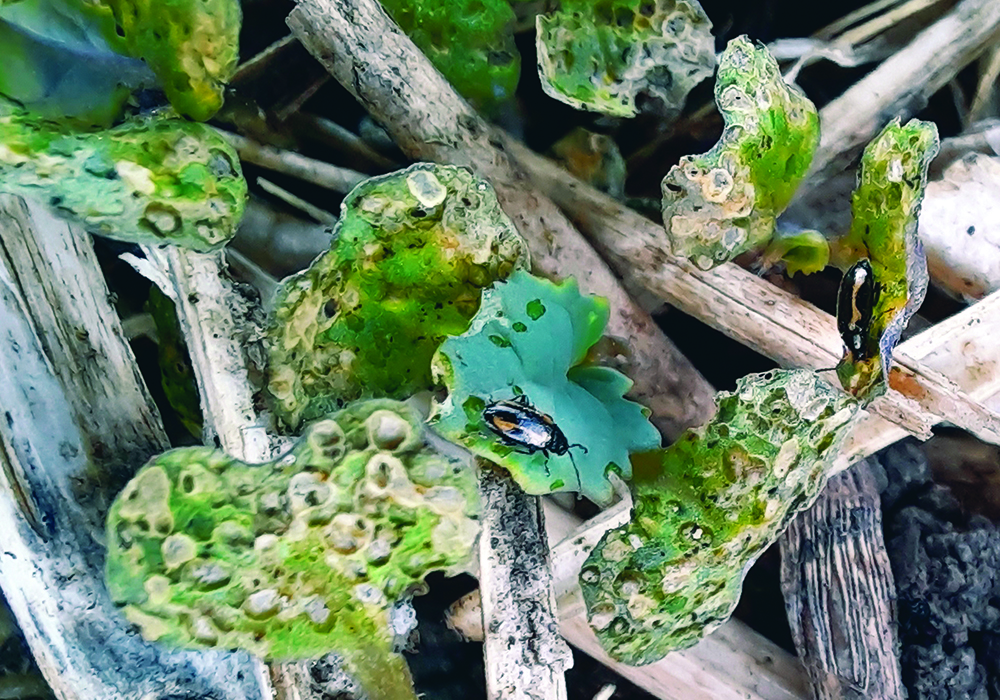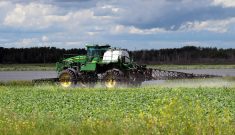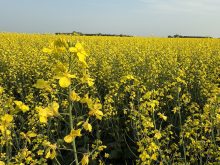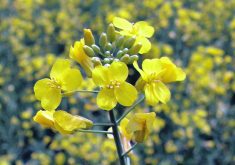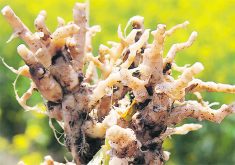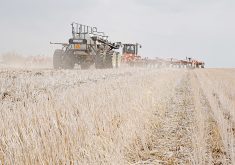Pests of canola including flea beetles, green worms of multiple types, cut worm, alfalfa loopers, blister beetles, lygus bugs, diamondback moths and more were present last summer.
However, there wasn’t a massive pest event in 2023 that dramatically affected canola plants across multiple growing regions, other than grasshoppers in drier areas.
Other stories in the 2023 Canola Yearbook:
- Decent yields in dry times
- Canola views – photo essay
- Canola growing season in review
- Spraying in dry times can be tricky
- Flying the fields
- Hormone imbalance suspected for malformed racemes
- Incorporating resistant traits weighs on yields
- Production briefs
- Disease roundup: Verticillium has breakout year
- Canola news briefs
- Canola growers scramble to address federal policy issues
- What happens when the big crop comes?
- Bids tumble but canola demand is firm
Flea beetles
For years, agronomists and pest experts told growers to seed canola as early as possible to avoid flea beetles.
But that thinking may be outdated, said Tyler Wist, a field crop entomologist with Agriculture Canada in Saskatoon.
“Early on, it was all crucifer flea beetles when that work (research) was done… all of that (previous) stuff is sort of out the window. I wouldn’t say that anymore. I might even say, seed a little bit later,” Wist said at Ag Days in Brandon in January.
“Why is that? Your ground is warmer, your plant comes up quicker. It takes up the insecticide better from the seed treatment. And it’s not sitting around … in a vulnerable stage (cotyledon stage).”
One problem of seeding early, say May 1, is that seed can sit in the ground for 10-17 days before the plant emerges. The delay could cause the insecticide seed treatment to lose effectiveness and the canola plant is no longer protected from flea beetles.
Chuck Fossay, who farms west of Winnipeg and is president of the Manitoba Canola Growers Association, said some farmers are listening to experts like Wist.
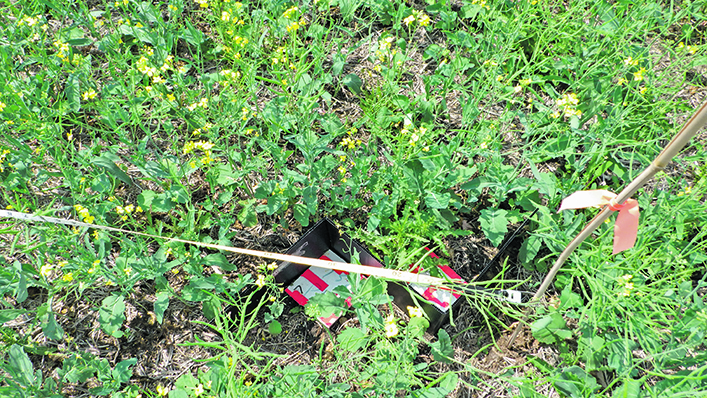
A percentage continue to seed canola as early as possible. Others are seeding canola in late May.
“The thinking is kind of split, right now,” Fossay said. “In my area, there are some guys seeding their soybeans before they seed their canola. And they’re getting some pretty good results.”
Fossay added the calendar shouldn’t determine when a grower puts seed in the ground. Soil temperature is more important.
“If the soil is warm, it doesn’t matter whether you’re seeding early in May or late in May,” he said.
Despite farmers’ efforts to get the crop off to a strong start, flea beetles make life difficult for canola growers somewhere on the Prairies nearly every spring.
“We are hearing about damage to seedling canola in the Saskatoon area,” James Tansey, provincial pest management specialist in Saskatchewan, told MarketsFarm in early June.
There were large numbers of striped flea beetles in the province’s northeast, Tansey added.
Controlling infestations of flea beetles was more confusing in 2023, thanks to a Pest Management Regulatory Agency decision from 2021.
That year, the PMRA announced that lambda-cyhalothrin (an insecticide) could not be applied to crops that are used for livestock feed.
The ruling was delayed and took take effect April 29, 2023.
The problem with the decision, is that most crops can be used for livestock feed.
In the case of canola, the meal is fed to livestock.
So, growers were unsure if they could spray their canola this spring with lambda-cy products to kill flea beetles. Or not.
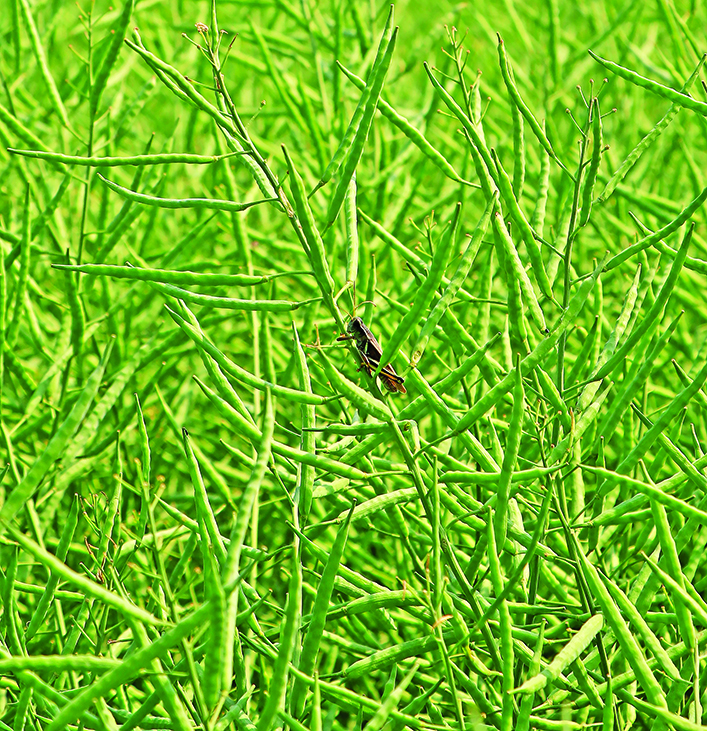
“The advice to growers is to seek certainty regarding the use of harvested canola, and if they can receive that assurance or certainty that (their crop) will be used solely for export or human consumption, That’s great…,” said Chris Davison, who is now president and chief executive of the Canola Council of Canada.
If there was a chance the canola would be fed to domestic livestock, then growers should use alternative insecticides, Davison added.
To remove some of the confusion, Syngenta decided that its lambda-cy insecticides, Matador and Voliam Xpress, could only be applied on horticultural and pulse crops in Western Canada.
Those crops are rarely used for livestock feed.
But ADAMA Canada, which markets an insecticide called Silencer, made its lambda-cy products available.
“We have confidence in our retail partners to provide good advice to growers and we trust growers themselves to use the product responsibly and within permitted guidelines,” said Cornie Thiessen, general manager of ADAMA Canada, in March.
Curtis Rempel, vice president of crop production and innovation at the Canola Council of Canada said the restricted use of lambda-cyhalothrin did not have a big impact on canola growers this year, largely because flea beetle pressure was low in most growing regions.
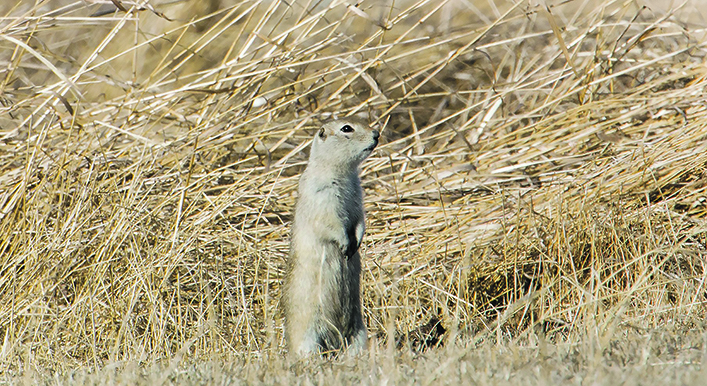
Gophers
In 2020, the PMRA announced a phase-out period for strychnine, after which the product would be banned. That period ended March 4, 2023.
Tansey said the Saskatchewan government did not support the removal of strychnine and it presented data to the PMRA that showed the product could be used safely and effectively for the control of gophers.
However, once the PMRA’s final decision was made to deregister strychnine, Tansey said Saskatchewan’s ministry of agriculture worked with the ministry in Alberta to develop data on alternative products farmers can use to control gophers.
“The zinc phosphide products, ZP Rodent Oat Bait Ag and Burrow Oat Bait, could be as effective as strychnine for ground squirrel control. My understanding is that large volumes of this material have gone out particularly in the southwest, and reports that I’ve heard from growers to date are that they’re encouraged by the results that they’re seeing with those,” Tansey said.
He said the zinc phosphide products are like strychnine in that they also don’t have an antidote.
ZP Rodent Oat Bait Ag and Burrow Oat Bait and are ready to use formulations with no mixing required.
“Just cut the bag open, get a spoon full and fire it down the hole, and with both products you have the option to use bait stations as well, which some growers prefer,” Tansey said.
He said the best time to place bait is from March 15 to April 30, before gophers have a lot of green plants to feed on.
Spiders
Researchers continue to study other methods of keeping pests of canola in check, such as the use of beneficial insects.
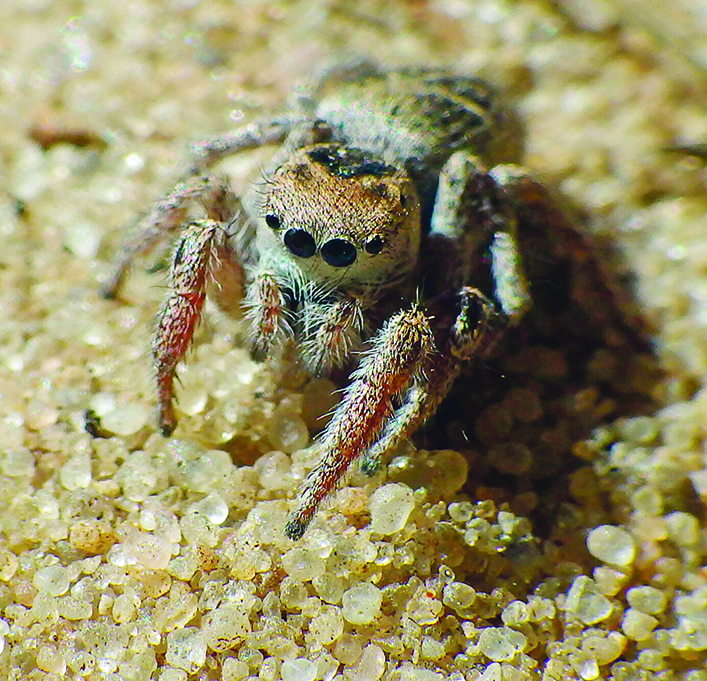
University of Alberta researchers have learned that spiders can play a role in pest management.
Biologists collected samples of spiders in Alberta, from canola crops and in the natural areas that surround the fields.
When crops are harvested, the spiders might move into the vegetation on the edges of a field. When the crop starts growing in the spring, the insects may move back into the field to feed on pests.
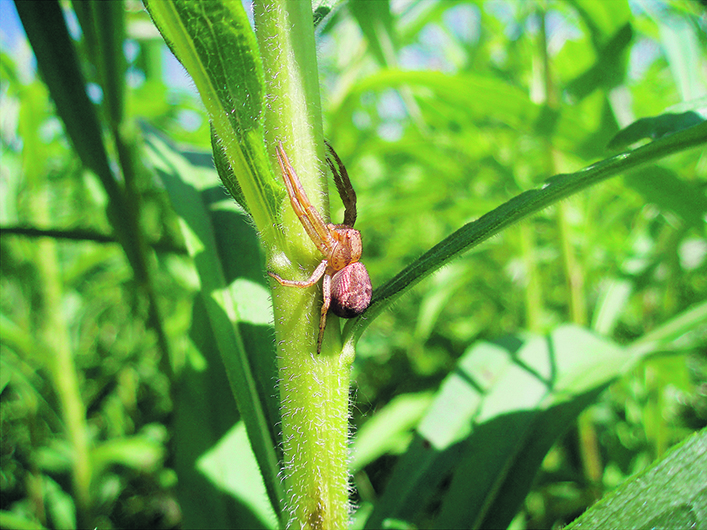
“We expect that there’s this seasonal back and forth movement between semi-natural vegetation and crop vegetation,” said Carol Frost, assistant professor of biology at the University of Alberta.
If producers maintain the natural areas around a field, the habitat could maintain a healthy population of pest-eating spiders.
“Try to apply (pesticides) precisely,” Frost said. “If you don’t need it over the whole field, just apply it in the problem areas.”
Contact robert.arnason@producer.com


